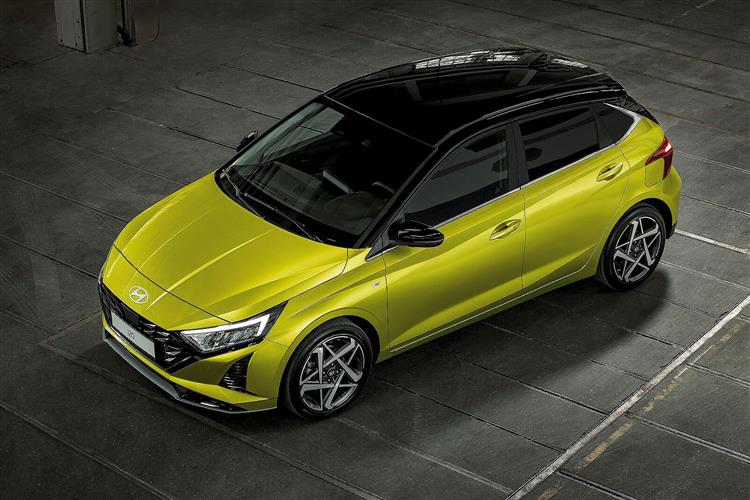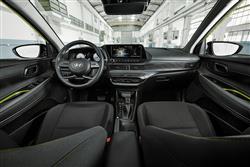SMALL WONDER (some text hidden) --NONE--
By Jonathan Crouch
The Hyundai i20 started slow but has built up genuine momentum. The revised version of this third generation version looks to keep that trajectory arrowing upwards. Jonathan Crouch drives it.
Ten Second Reviewword count: 77
The third generation version of Hyundai's i20 has been usefully improved. No longer merely a budget choice, it now has the quality, the efficiency, the technology and the looks to square up against the supermini class leaders. Plus it's still got one of the best after-sales packages anywhere in the car industry - and pricing hasn't got too ambitious. In other words, if you're shopping in this segment, here's a car you shouldn't leave off your shortlist.
Backgroundword count: 149
We're used to hearing success stories from Hyundai, but in recent years, there's one important market segment this Korean company has found something of a struggle: that for superminis. The company's i20 model has always aimed to rectify that oversight, but the MK1 and MK2 versions (introduced respectively in 2009 and 2015) have had limited success in this regard. This third generation design was launched back in 2020 aiming to do better, aided by a much more eye-catching design and the introduction of a clever mild hybrid 1.0-litre T-GDi petrol powerplant. Like its predecessors, this MK3 'BC3'-series design was developed following a German-based product development programme and a demanding testing schedule on roads right across the Euro zone. This one, in other words, was created precisely for us. And three years into its production cycle, it's been usefully improved to create the car we're going to look at here.
Driving Experienceword count: 244
Nothing much has changed beneath the bonnet with the revised version of this third generation i20. Various engines are being offered with this car in other markets but here, for mainstreams versions, we only get a single unit - a 1.0-litre T-GDi petrol powerplant putting out 100PS. It's a 48-volt mild hybrid powertrain, a system which harvests energy that would otherwise be wasted under deceleration and can redeploy that power to reduce load on the engine. This car is offered with either a 6-speed iMT manual gearbox or 7-speed 7DCT auto transmission. The 'iMT' manual 'box is interesting, featuring an electronic clutch able to decouple the gearbox from the engine when coasting to save fuel. Across the range, the i20 has always made great play of being designed by Europeans, in Europe for European conditions, so it's no surprise that buyers of this model have always liked the way the car drives. With this MK3 version, the steering system is a brushless a/c electric motor-driven steering set-up that offers a really tight turning radius - which should make the car easy to navigate in town. Excellent forward visibility is enabled by the slim front A-pillars. Hyundai says that it's concentrated on keeping the steering light and direct, which should further help in an urban environment. This and the wheel-at-each-corner design makes each extremity of the car easy to position and it ought to be simplicity itself to park. Just as a supermini should be.
To see the full road test text contact us on 0330 0020 227
Pictures (high res disabled)

.jpg)
|
.jpg)
|
.jpg)
| |||
.jpg)
|
.jpg)
|
.jpg)
| |||
.jpg)
|

|
Statistics (subset of data only)
Min |
Max |
|
Price: |
£18,800.00 (At 2 Feb 2021, Advance) |
£24,180.00 (At 2 Feb 2021, N Line S) |
Insurance group 1-50: |
13 |
16 |
CO2 (g/km): |
115 |
121 |
Max Speed (mph): |
117 |
|
0-62 mph (s): |
10.4 |
|
Combined Mpg: |
56.5 (WLTP) |
|
Length (mm): |
4040 |
|
Width (mm): |
1775 |
|
Height (mm): |
1450 |
|
Scoring (subset of scores)
Category: Small Runabouts
| Performance | |
| Handling | |
| Comfort | |
| Space | |
| Styling, Build, Value, Equipment, Depreciation, Handling, Insurance and Total scores are available with our full data feed. | |



